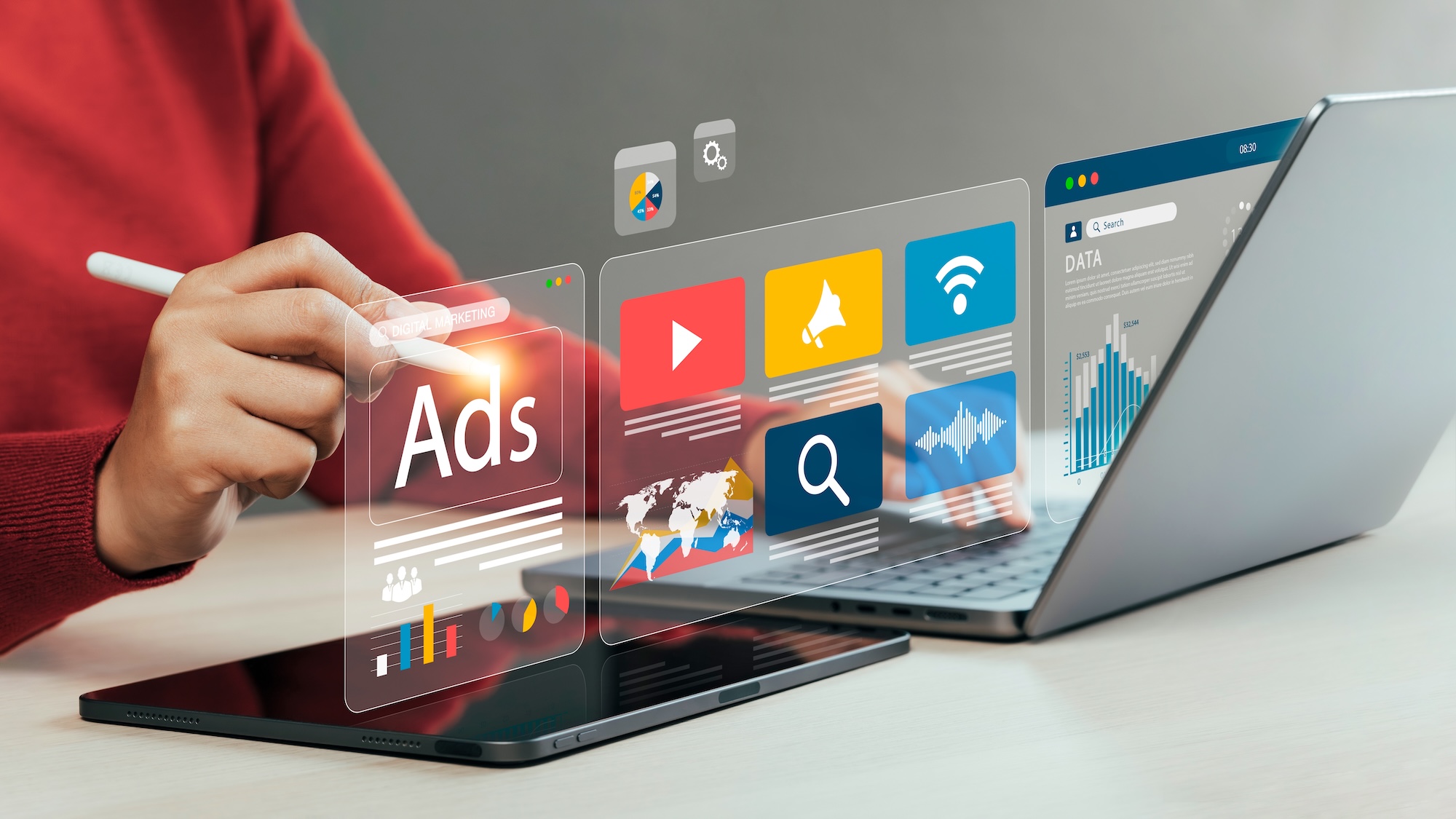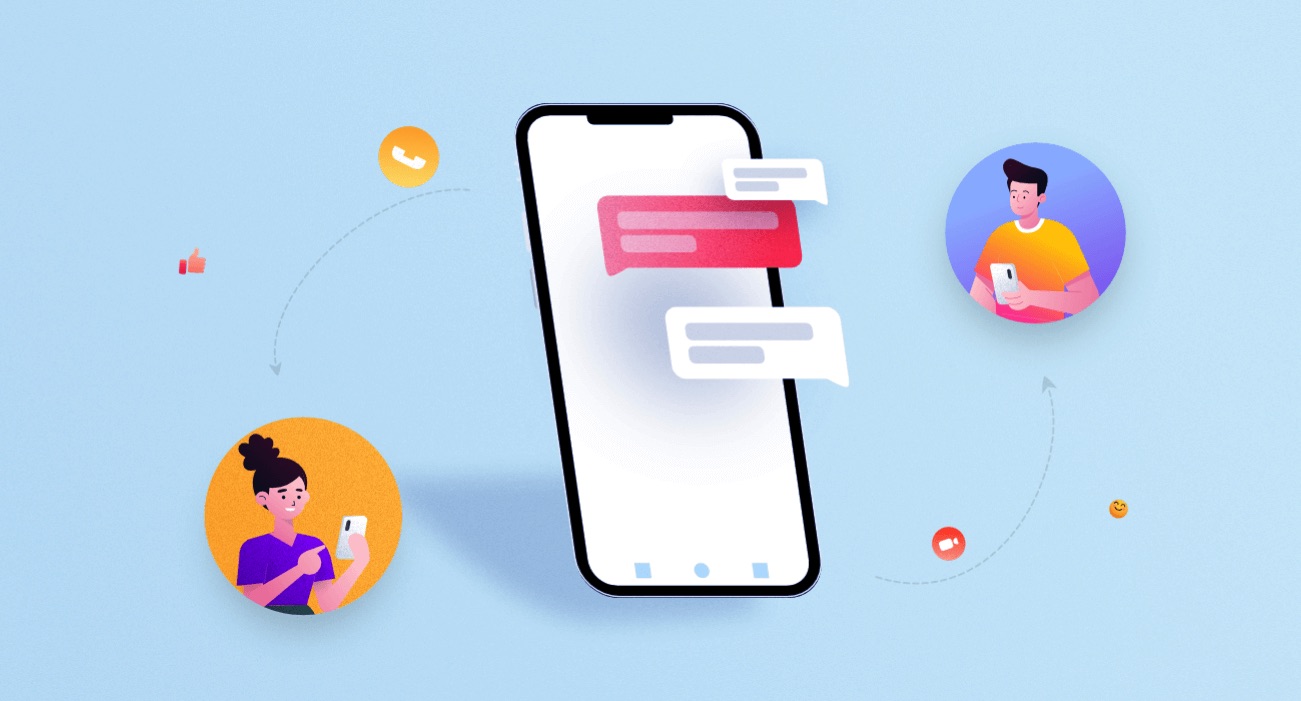Advertising your small business isn’t what it used to be.
You’ve got a thousand options, and even more opinions. Some say you need to go all-in on social. Others swear by Google Ads, print flyers, SEO, or whatever the latest marketing guru is selling this week. But when you’re running a business, you don’t have time to test every tactic or waste money figuring it out the hard way.
If you’ve ever Googled “advertising my small business” and come away more confused than when you started, you’re not alone. That’s why we created this guide: to answer the real questions small business owners are asking. From what platforms work to how much it should cost (and whether anything good is still free), we’re breaking it all down here.
If you’re looking for done-for-you support, you can also explore our small business advertising services to get expert help building a strategy that fits your goals and budget.
“Advertising My Small Business” FAQs
We’ve compiled and answered the most common questions small business owners ask when it comes to advertising, with zero fluff and plenty of actionable ideas. Whether you’re just getting started or trying to scale what’s already working, these answers will help you make smarter, more strategic decisions.
Let’s start with the basics and build from there.
How Can I Advertise My Small Business?
Smart advertising for your small business starts with understanding your options. And knowing that you don’t have to do everything at once.
Here are the four main categories of advertising you can tap into:
- Digital advertising: Think paid search (Google Ads), social media ads (Facebook, Instagram, LinkedIn), and display ads that show up on websites your audience visits. These are trackable, scalable, and a smart place to start for most modern businesses.
- Organic channels: SEO, content marketing, local listings, and building a social media presence all fall into this bucket. It’s a longer game, but it builds credibility and fuels growth over time, especially when paired with paid campaigns.
- Traditional advertising: Local newspapers, flyers, radio spots, and event sponsorships still have a place, depending on your audience. These are often best for community-focused businesses or niche service areas.
- Relationship-based marketing: Word-of-mouth, referral programs, reviews, and partnerships can drive incredibly high-converting leads, especially if you’ve built trust in your niche.
Your best move? Start with one or two of these categories based on where your target audience spends most of their time. You can always expand from there once you’ve dialed in what works.
Where Can I Advertise My Small Business?
Once you know how you can advertise, the next question is where. Choosing the right place to run your ads (or promote your business organically) should stem from who you’re trying to reach and how they prefer to engage.
Here are some of the most effective places to advertise your business today:
- Google: Great for capturing people with high intent. When someone’s searching for a service or product you offer, showing up at the top of the results is an undeniable advantage. Google Search Ads, Local Services Ads, and Google Maps visibility are all options worth exploring.
- Facebook and Instagram: Ideal for reaching people based on interests, behaviors, and demographics. These platforms are especially effective for visual businesses, service-based brands, and those with strong customer stories.
- YouTube: Perfect for building brand awareness, especially with geo-targeted or retargeting ads. If you have video content or a compelling story to tell, YouTube offers high visibility and relatively low costs.
- Yelp, Nextdoor, and Google Business Profile: These are must-haves for local businesses. Optimizing your presence here helps you show up when people search nearby—and builds trust through reviews.
- Local sponsorships and community boards: Sometimes the best advertising isn’t digital. Think: sponsoring a youth sports team, partnering with a local nonprofit, or posting in neighborhood Facebook Groups. These help you build recognition and goodwill in your community.
Instead of asking “what’s the best platform,” start by asking: Where do my customers hang out—and who do they trust there? That’s where you need to be.
Why Is Advertising Important for Small Business Growth?
Advertising isn’t just about visibility. It’s about creating momentum.
For small businesses, advertising is often the key to getting out of the referral-only bubble and attracting new customers who haven’t heard of you yet. It helps you stay top of mind, show up in the right moments, and compete with bigger players who already have brand recognition.
Here’s what smart advertising can do for your growth:
- Drive consistent traffic and leads: Instead of relying on word-of-mouth alone, advertising creates a steady stream of potential customers actively looking for what you offer.
- Build trust and credibility: When your brand shows up professionally in search results or social feeds, people take you more seriously, even if they’ve never heard of you.
- Expand your reach faster: Organic growth takes time. Advertising lets you accelerate results, test messaging, and scale what works.
- Support your long-term strategy: Whether you’re preparing to launch something new, enter a different market, or simply grow revenue, advertising gives you the data and visibility to make smarter decisions.
Bottom line: if you want to grow, you need to be seen. And advertising is how you make sure the right people see you at the right time.
What Is the Best Advertising for a Small Business like Mine?
Hate to break it to you, but there’s no one-size-fits-all answer here. The best advertising for your small business depends entirely on your goals, your audience, and your industry.
Here’s how to think about it:
- Local services: If you’re a home service provider, contractor, or local shop, Google Search Ads and Google Business Profile are usually the strongest plays. People are searching with high intent, and being visible at the top of results can drive direct leads.
- E-commerce: Product-based businesses thrive on visual platforms. Meta Ads (Facebook and Instagram), Google Shopping, and influencer partnerships are often the most effective channels for driving clicks and conversions.
- B2B companies: If you sell to other businesses, LinkedIn Ads, targeted email campaigns, and paid search can help you reach decision-makers. Supplement with retargeting across platforms to stay top of mind during long sales cycles.
- Coaches, consultants, or personal brands: These businesses do best with a strong content and lead generation strategy. Facebook lead ads, webinars, and strategic YouTube content are excellent for building trust and growing an email list you can nurture over time.
Start with the platform that best aligns with your audience’s behavior, and focus your efforts there. You don’t need to be everywhere—you just need to be where it counts.
What Are the Best Free Advertising Options for My Small Business?
Not every effective strategy has to come with a price tag. Some of the most valuable advertising channels are free (or close to it), especially when you’re just getting started.
Here are a few of the best free options to consider:
- Google Business Profile: Claiming and optimizing your listing can help you show up in local searches and Google Maps. Add photos, collect reviews, and post updates regularly to stay visible.
- Facebook Groups and community forums: Local and niche groups can be goldmines for word-of-mouth exposure. Just be sure to show up with value, not spam.
- Referral incentives: Offering a discount or bonus for customer referrals costs nothing upfront and often brings in highly qualified leads.
- SEO content and blogging: Publishing helpful blog posts or resource pages on your website builds authority and drives organic traffic over time.
- Free directories and listings: Sites like Yelp, Nextdoor, Alignable, and industry-specific directories are often free to join, and they help with both visibility and backlinks.
Free advertising takes effort instead of dollars, but when done right, it builds a strong foundation for long-term growth.
How Much Should My Small Business Spend on Advertising Each Month?
There’s no perfect number, but there is a smart way to set your budget.
For most small businesses, a good starting point is 5–10% of your monthly revenue, especially if you’re in growth mode. But how you spend that budget matters just as much as how much you allocate.
Here’s a quick breakdown to guide your planning:
- If you’re just getting started: Keep it lean. Test one or two platforms with a small daily budget—think $5–$20 per day—and focus on generating a few qualified leads you can track back to your ads.
- If you’re growing steadily: Start to scale what’s working. Increase your ad spend in channels that are delivering clear results, and allocate a portion of your budget for testing new creative or platforms.
- If you’re outsourcing to a paid ads agency: Factor in management fees alongside your ad budget. A good partner will help you stretch your dollars further and avoid costly trial-and-error.
More important than the exact dollar amount is your ability to track what’s working. Even a small budget can go a long way when your messaging, targeting, and conversion tracking are dialed in.

How Do I Make Facebook Advertising Successful for My Small Business?
Facebook (and Instagram) can be incredibly effective for small businesses, but success takes more than boosting a post and hoping for the best. To see real results, you need a strategy that matches your audience, your offer, and your goals.
Here’s what works:
- Use eye-catching creatives: Scroll-stopping visuals matter. Choose high-contrast images or short videos that clearly communicate your offer, even without sound.
- Leverage lookalike audiences: Upload your customer list or use Meta’s pixel to create audiences that behave like your best customers. This helps your ads reach people who are more likely to take action.
- Test multiple versions: Run small A/B tests with different headlines, visuals, or calls to action. Often, a small tweak can improve performance in a big way.
- Keep your copy short and focused: Highlight one clear message per ad. Let people know what they’ll get and what they should do next.
- Track real results: Use Meta’s conversion tracking or UTM tags to measure outcomes like leads or sales, not just clicks.
With the right setup, Facebook Ads can drive growth without blowing your budget. The key is clarity, testing, and learning what works over time.
How Do I Use Google Advertising for My Small Business the Right Way?
Google Ads is one of the most powerful tools for reaching people who are already looking for what you offer. But to get results, you need more than just a few keywords and a daily budget. A thoughtful setup is what separates wasted spend from real ROI.
Small businesses can’t afford to waste ad spend teaching Google’s automation what not to do. If your budget is under $3,000 per month, it’s usually smarter to start with manual bidding, tightly focused keywords, and reliable conversion tracking to maximize every dollar (Search Engine Land, 2025).
Here’s how to do it right:
- Start with Search, not Display: Search Ads appear when someone types in a relevant query, which means high intent and higher chances of conversion. Save Display Ads for remarketing or broader awareness later on.
- Use intent-based keywords: Focus on terms that show someone is ready to act, like “near me,” “hire,” or “best.” Mobile searches for phrases like “near me” or “to buy near me” have grown over 500% in the past two years, showing how powerful local, high-intent searches can be (Think With Google). Avoid overly broad keywords that bring in unqualified clicks.
- Add negative keywords early: This helps prevent your ads from showing up in irrelevant searches. It’s one of the easiest ways to improve ad quality and reduce wasted spend.
- Geo-target your campaigns: Local businesses should limit ads to specific areas using radius or zip code targeting. That way, your budget stays focused on people who can actually become customers.
- Track meaningful conversions: Set up tracking for form submissions, phone calls, or online purchases. It’s not about how many people saw your ad—it’s about how many took the next step.
If Google Ads hasn’t delivered in the past, it probably needed a smarter setup. Once your targeting, messaging, and tracking are aligned, it becomes a channel you can actually rely on.

What Small Business Advertising Ideas Actually Work?
The best advertising ideas don’t always require a big budget. What matters more is timing, targeting, and creativity. Here are a few tried-and-true tactics that work well for small businesses:
- Geo-targeted YouTube ads: Want to stay top of mind in your local market? Short video ads that run before or during local content can build brand awareness fast, especially when paired with smart targeting.
- Giveaway contests with UGC: Run a social giveaway and ask participants to tag a friend, leave a review, or post user-generated content. It’s a great way to expand your reach without paying for every impression.
- Newsletter sponsorships: Find a local or niche email newsletter that aligns with your audience and sponsor a section or callout. These placements often feel more personal than typical ads and can drive high engagement.
- Vehicle decals or wraps: If you’re always on the move, turn your vehicle into a rolling billboard. It’s a one-time investment that keeps working every time you drive through your target area—especially considering wraps can cost less than $44 per million impressions, making them one of the most cost-effective forms of advertising (Outdoor Advertising Association of America).
- Landing pages with QR codes: Create simple, mobile-friendly landing pages tied to specific offers, then use QR codes on flyers, receipts, or signage to drive traffic there. It’s a smart way to connect offline and online efforts.
Every business is different, so start with one or two ideas that match your brand and audience. The right concept, well-executed, can do more than a giant budget with the wrong message.
What Are the Biggest Advertising Mistakes Small Businesses Make?
A smart strategy can grow your business. A sloppy one can drain your budget fast. These are the most common missteps we see—and how to avoid them:
- No clear goal: Running ads without defining what success looks like will burn through your budget. Before you launch anything, decide whether you’re aiming for leads, sales, bookings, or brand awareness.
- Targeting too broadly: Trying to reach “everyone” usually means reaching no one. Narrow your audience based on location, interests, behavior, or buyer stage so your message lands where it counts.
- Not tracking performance: If you’re not measuring results, you’re guessing. Set up conversion tracking and review your data regularly to know what’s working and what’s not.
- Jumping platforms too fast: It’s tempting to try every channel at once. But spreading your budget too thin across platforms usually leads to mediocre performance everywhere. Master one or two first, then expand.
- Copying competitors without context: Just because another business is running a certain type of ad doesn’t mean it’s working for them, or that it will work for you. Focus on your strengths and speak directly to your audience.
Advertising doesn’t have to be complicated, but it does have to be intentional. If you skip the strategy and jump straight to tactics, you’ll end up with a lot of noise and very few results.

Small Business Advertising Services from Flyrise
Advertising your small business isn’t about being everywhere. It’s about showing up in the right places, with the right message, at the right time.
Whether you’re testing the waters with a $10 daily budget or gearing up to scale, success starts with a clear plan, smart targeting, and a willingness to adjust as you go. The most effective campaigns aren’t always the flashiest. They’re the ones built with focus, consistency, and a strong understanding of your audience.
Need help building the right strategy? Explore our small business paid ad services to get support that’s clear, actionable, and won’t waste away your budget.




